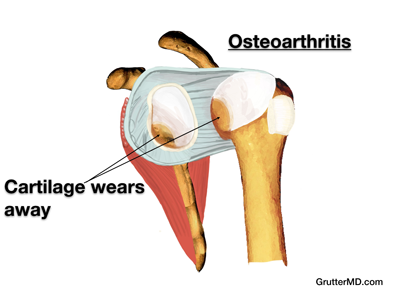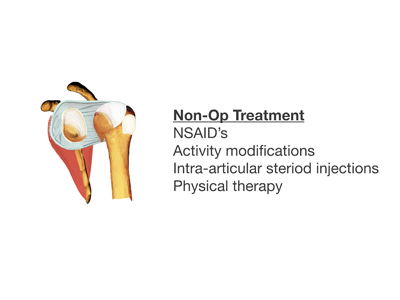synonyms: shoulder arthritis, shoulder osteoarthritis, glenohumeral arthritis, shoulder replacement surgery, total shoulder replacement, total shoulder arthroplasty
|
Normal Shoulder Anatomy The articular surfaces of the shoulder joint are normally covered with a smooth gliding surface called articular cartilage. |
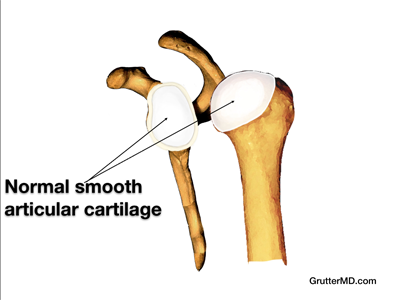 |
|
|
Shoulder Arthritis Arthritis is when the smooth gliding surface in a joint wears out. This smooth gliding surface is called cartilage and when it wears out the bones in a joint rub against each other which is painful. Shoulder pain can result from arthritis. Shoulder arthritis causes swelling, pain and stiffness. Arthritis may be related to sports or work injuries. |
|
Shoulder Arthritis Natural History Shoulder arthritis generally gradually progress over time. Worsening arthritis in the shoulder may lead to increased pain and increased stiffness in the shoulder. Often people with arthritis will avoid shoulder movements in an attempt to lessen their pain. Over time the restricted motion and pain leads to restricted use of the shoulder which can limit a persons ability to perform their activities of daily living.
|
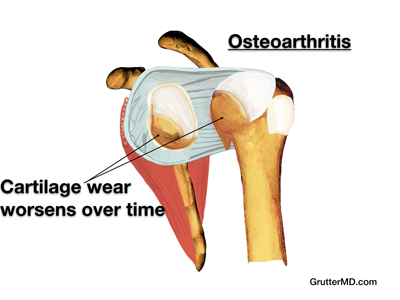 |
|
|
Shoulder Arthritis Conservative Treat Conservative (non-operative) treatment for shoulder arthritis includes non-steroidal anti-inflammation medications such as motrin and naproxen as well as activity modifications, steroid injections and physical therapy. |
|
Total Shoulder Replacent (total shoulder arthrplasty) When conservative treatment has failed the main treatment option for shoulder arthritis is total shoulder replacement. In the surgery the arthritic areas of bone are removed. |
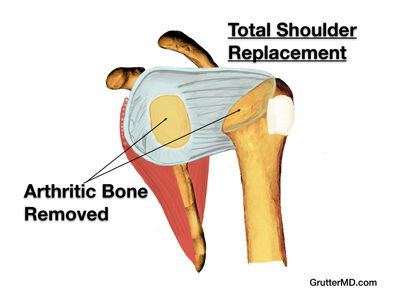 |
|
Total Shoulder Replacent (total shoulder arthrplasty) The arthritic areas are then replaced with metal and plastic to restore a smooth articulation to the joint and relieve the pain of shoulder arthritis.
|
|
|
|
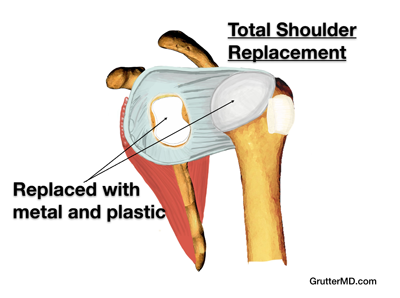 |
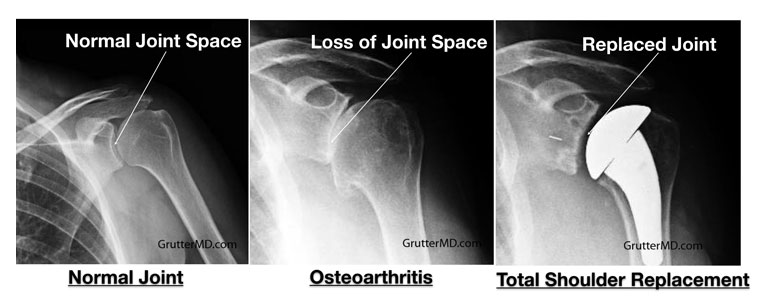
Total Shoulder Replacement Rehab
Every person and their particular circumstances are different. The rehab course follow surgery is determined for each patient individually. After surgery patients are typically placed in an abduction sling for 6 weeks. They may take it off to eat, shower, and to use the arm for desk work. Cold therapy devices (cryotherapy) are very helpful to deceases pain, improve sleep and decreases need for pain medication.
Patients should not smoke for 8 weeks prior to surgery and 8 weeks after surgery. Smoking greatly decreases the body's healing responses and patients who continue to smoke after surgery have poorer outcomes than those who quit smoking.
Patients generally start physical therapy 2 weeks after surgery.
At 4-6-weeks patients may discontinue the sling, and begin overhead stretching exercises.
Generally allowed to drive 4 weeks after surgery provided they have progressed well with PT and are not taking narcotic pain medications.
Golf: May hit off the tee at 3 months if motor function has been restored. No hitting off the ground/farway for 6 months.
Patients generally can return to sports after TSA. Most common sports include: swimming, golf, cycling, and fitness training.
Every person and their particular circumstances are different so the treatment for your shoulder may be different than those discussed above. Please read this information carefully. Write down any questions that you have about your injury and its treatment and discuss them with Dr. Grutter. Working together you and Dr. Grutter will determine the best treatment for you.
Dr. Grutter's offices are located just outside Nashville in Gallatin, and Hendersonville Tennessee. Directions to the Gallatin office from Nashville or surrounding areas in Tennessee can be located here.
